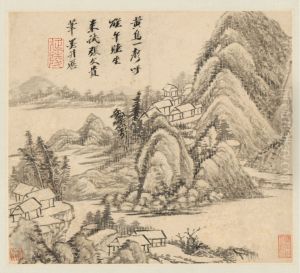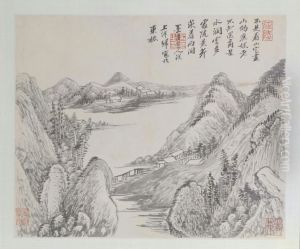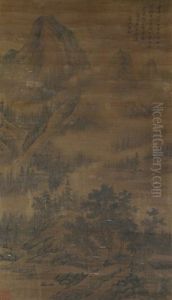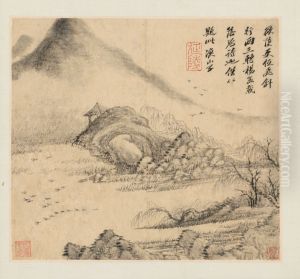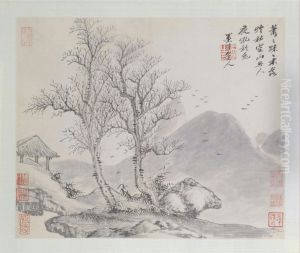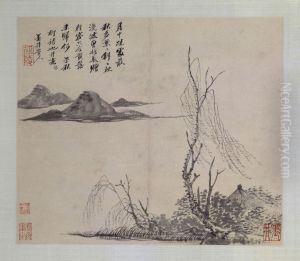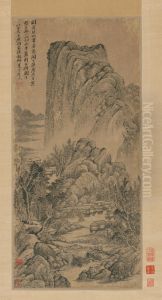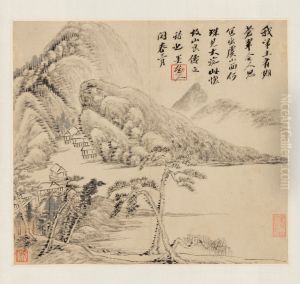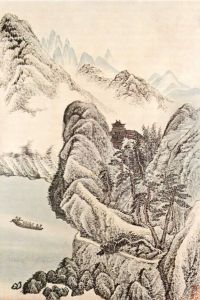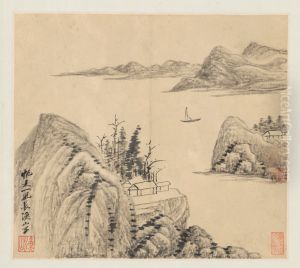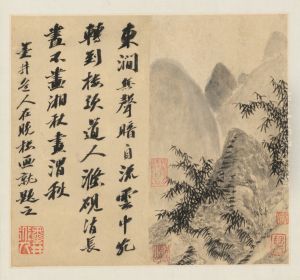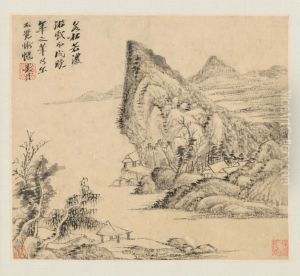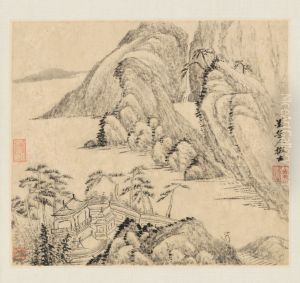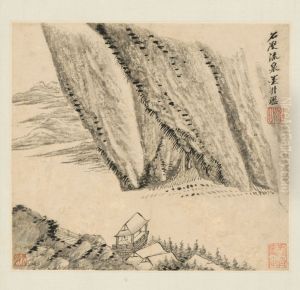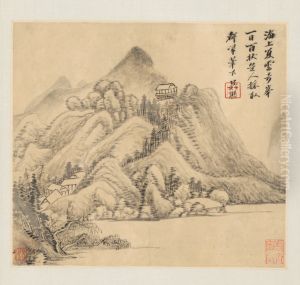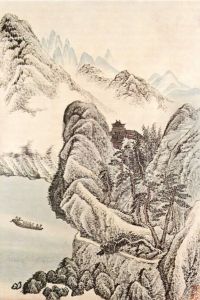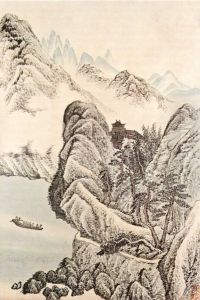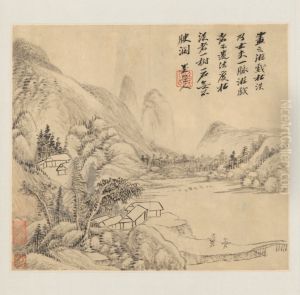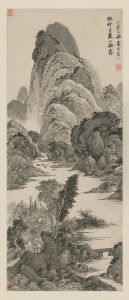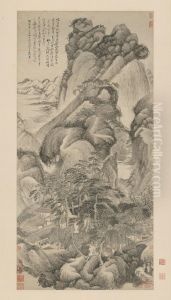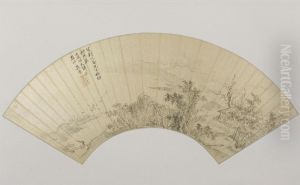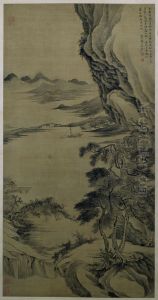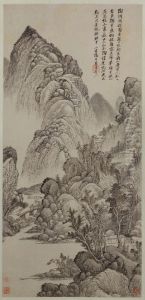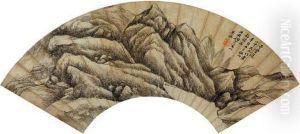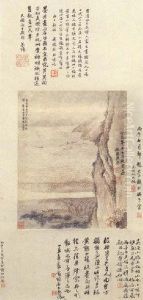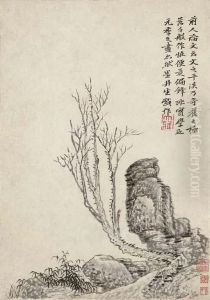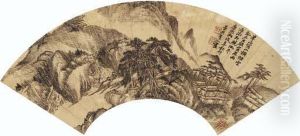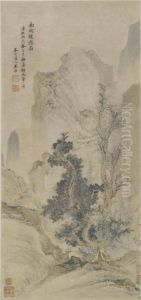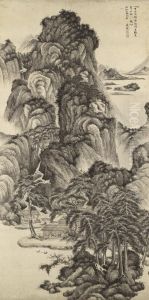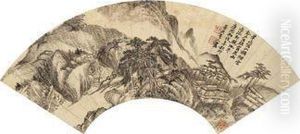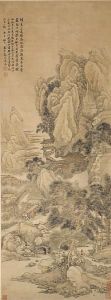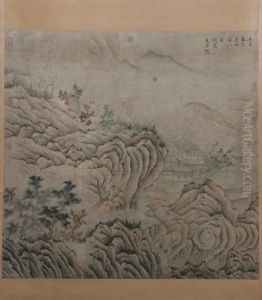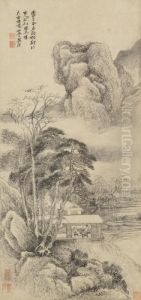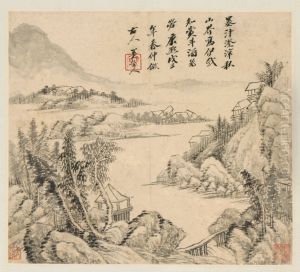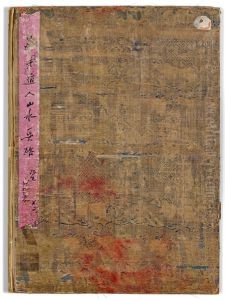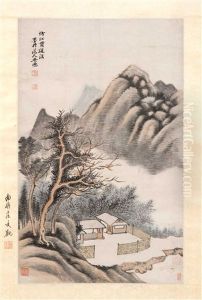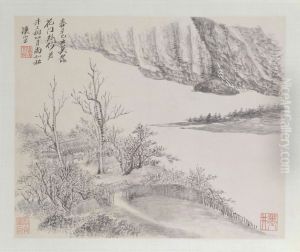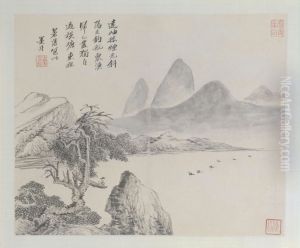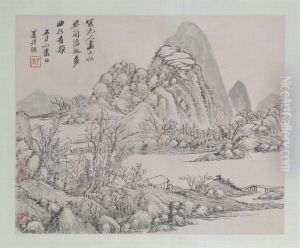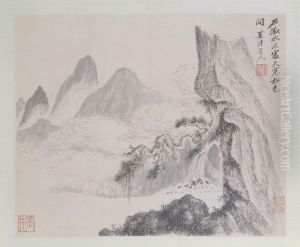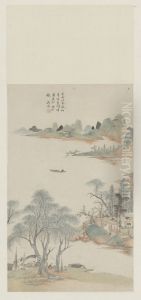Wu Li Paintings
Wu Li was a Chinese landscape painter, poet, and calligrapher during the Qing Dynasty. Born into a scholarly family in Jiangsu province, Wu Li was originally trained in the literati style of painting, known as 'wenrenhua'. He was well-versed in the classics and demonstrated a deep appreciation for the arts from an early age. Wu Li's early works were influenced by Ming Dynasty artists such as Dong Qichang, who advocated for the integration of poetry, calligraphy, and painting.
Wu Li became a convert to Christianity after the fall of the Ming Dynasty and the establishment of the Qing Dynasty, under the influence of the Jesuit missionaries in China, most notably Johann Adam Schall von Bell and Ferdinand Verbiest. This conversion had a profound impact on his life and work. He even took the Christian name 'Simon' and studied theology, eventually becoming ordained as a Jesuit priest in 1688.
As a painter, Wu Li was known for his majestic landscapes which often incorporated elements of both Chinese tradition and Western perspective, a technique likely influenced by his interaction with Jesuits who were knowledgeable in Western art. His brushwork was free and expressive, yet meticulously detailed. Wu Li's landscapes were not just a reflection of the natural world but also an embodiment of the artist's inner emotions and spiritual pursuits.
Wu Li's poetry, like his paintings, is characterized by a sense of elegance and profound contemplation. His works in both mediums often explored the themes of nature, solitude, and the quest for spiritual enlightenment. Despite his conversion to Christianity, Wu Li remained deeply influenced by Confucian and Daoist thought, which is evident in the philosophical underpinnings of his art.
After his ordination, Wu Li continued to paint, but his later works show an even greater emphasis on spiritual and religious themes. He has been grouped with the 'Four Masters of the Qing Dynasty', along with Wang Shimin, Wang Jian, and Wang Yuanqi, though his oeuvre is distinct for its synthesis of Chinese and Western elements. Wu Li's contributions to Chinese art are significant in that they represent a unique fusion of cultural and artistic traditions during a period of great change in China's history.
